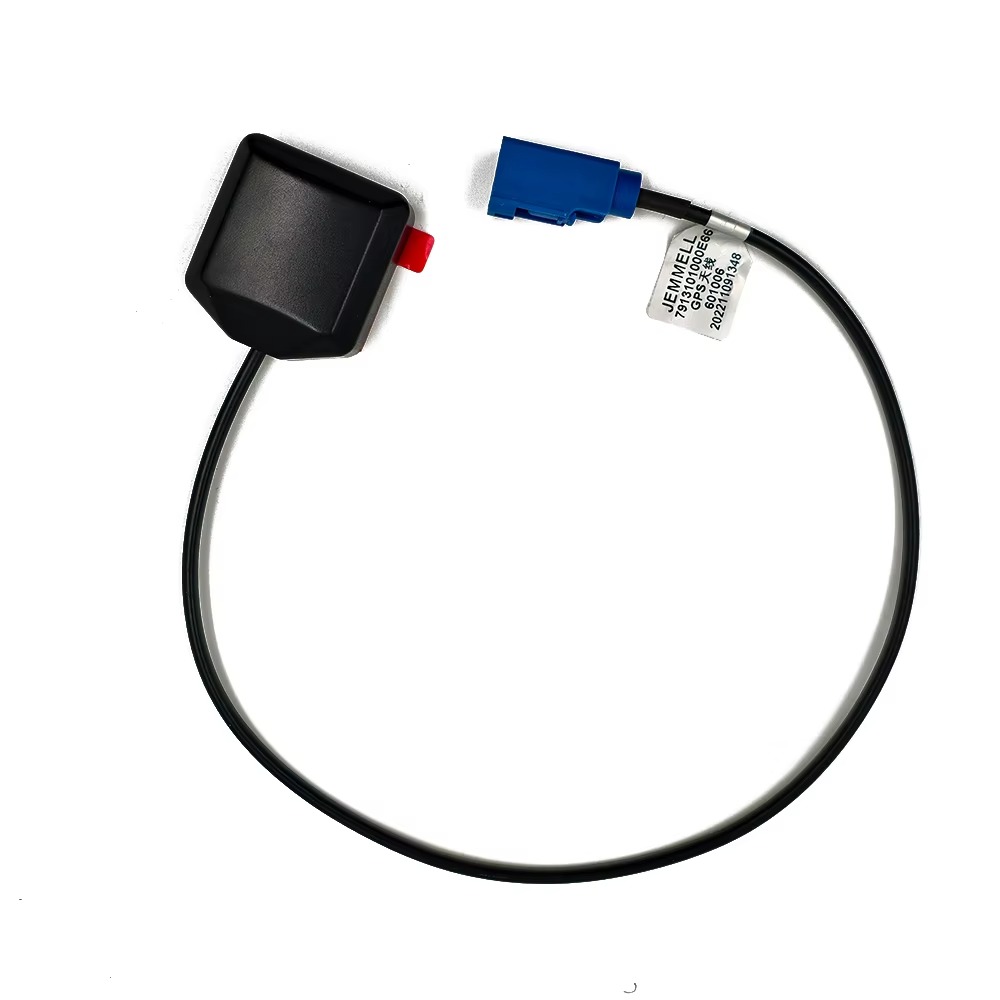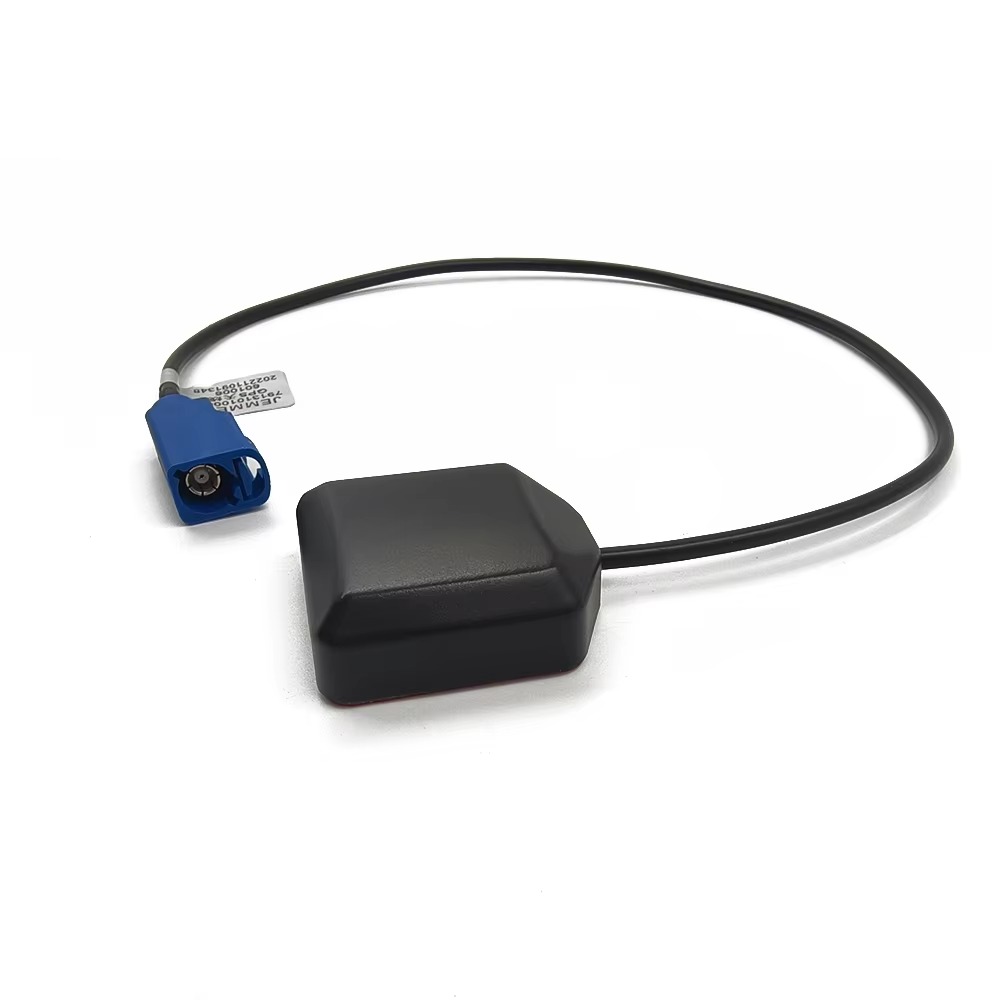The strong-magnet magnetic mount GPS antenna is a workhorse component whose simplicity and effectiveness have secured its role in a diverse range of mobile and portable applications. It is the enabling technology for rapid GPS deployment across numerous industries. Furthermore, its design continues to evolve to meet new demands and integrate with emerging technologies.
Applications
Fleet Management and Telematics: This is one of the largest applications. Companies use these antennas to easily equip their trucks, vans, and cars with GPS tracking devices for logistics optimization, driver behavior monitoring, fuel efficiency analysis, and asset security. The magnetic mount allows for quick installation and transfer between vehicles, maximizing flexibility for growing or changing fleets.
Law Enforcement and Public Safety: Police, ambulance, and fire services use these antennas on patrol cars and incident response vehicles. They provide reliable location data for computer-aided dispatch (CAD) systems, automatic vehicle location (AVL), and mobile data terminals. The temporary nature of the mount is ideal for unmarked or pooled vehicles.
Field Service and Utilities: Technicians working in fields like telecommunications, oil and gas, and electricity distribution use these antennas with ruggedized tablets or laptops for GIS data collection, asset mapping, and navigating to remote job sites. The antenna can be quickly placed on a service truck at the start of a shift.
Journalism and Live Broadcasting: News vans and field reporters use magnetic mount antennas to provide precise location and timing data for satellite uplinks, live feeds, and timestamping field reports. They are also used with satellite phones for communication from remote locations.
Consumer and Recreational Use: Individuals use them to boost the GPS signal for personal navigation devices in rental cars, for in-car gaming systems that use location data, or with portable GPS units for road trips and camping. They are also popular in the RV and boating communities as a temporary solution when a permanent antenna is not installed.
Temporary Surveying and Mapping: While not for high-precision RTK work, these antennas are perfectly suitable for lower-accuracy GIS data collection, environmental monitoring, and mapping applications where a quick, temporary setup is required.
Future Trends
Integration of Multi-Band and Multi-Constellation Support: The next generation of magnetic mount antennas will move beyond GPS L1. Multi-band antennas that also receive L5, L2, and signals from all major constellations (GLONASS, Galileo, BeiDou) will become standard. This will provide faster acquisition, better accuracy, and improved reliability in urban canyons, even for consumer-grade applications.
Development for Non-Ferrous Surfaces: To address the limitation of aluminum and composite-bodied vehicles, future designs may incorporate hybrid mounting systems. This could involve a magnetic base paired with a strong supplemental adhesive for non-ferrous surfaces, or the development of more powerful and cleverly designed magnets that can work with thinner aluminum panels.
"Smart" Antennas with Integrated Electronics: The antenna could evolve into a more intelligent device. Future models might incorporate a small GNSS receiver chip within the housing itself, outputting position data via a digital protocol like USB or Bluetooth. This would turn the antenna into a complete, self-contained GPS sensor, reducing cable clutter and allowing it to connect directly to tablets and smartphones without a separate receiver unit.
Enhanced Durability and Materials: The use of more advanced polymers and composites will make radomes even more resistant to UV degradation and physical impact. Strain relief technology will continue to improve to virtually eliminate cable breakage, the most common point of failure.
Miniaturization and Lower Profile: Advances in ceramic patch technology and electronics will allow for high-performance antennas in an even smaller and lower-profile form factor. This would reduce wind resistance, improve aesthetics, and make them less obtrusive on vehicle roofs.
Focus on Cybersecurity: As GNSS jamming and spoofing become more prevalent, there may be a demand for magnetic mount antennas that incorporate basic filtering to reject out-of-band interference, providing a first layer of defense for the connected receiver.
The strong-magnet magnetic mount GPS antenna is not a static technology. It will continue to adapt, offering greater performance, intelligence, and versatility. Its core value proposition—instantaneous deployment and reliable external signal acquisition—will ensure it remains a vital tool in the mobile connectivity toolkit for years to come, finding new applications in the evolving landscapes of autonomous logistics, connected cars, and the Internet of Things.
Conclusion
The strong-magnet magnetic mount GPS antenna is a quintessential example of elegant and practical engineering solving a well-defined problem. It stands as a testament to the principle that the most effective solutions are often those that are simple to deploy, intuitive to use, and directly address a core user need. In a world increasingly dependent on precise location data, this antenna democratizes high-performance GPS reception, making it accessible to anyone with a vehicle, without the need for commitment, expertise, or permanent modification.
Its design is a successful fusion of disparate disciplines. It combines the brute force of neodymium magnet chemistry with the subtle finesse of RF microwave engineering. The antenna element itself is a masterpiece of miniaturization, leveraging the properties of high-dielectric ceramics to create a resonant structure that fits in the palm of your hand. The integration of the low-noise amplifier showcases an understanding of the entire signal chain, amplifying the signal at the optimal point to overcome the inevitable losses of a practical installation. And all of this is packaged within a housing that must be both environmentally sealed and aesthetically unobtrusive.
The advantages it offers are profound in their practicality. The ability to achieve a near-permanent level of mounting security in a matter of seconds is its killer feature. This unlocks unparalleled flexibility for fleet managers, field technicians, and public safety officials. The dramatic improvement in signal quality over any in-vehicle solution provides tangible benefits in accuracy, reliability, and operational efficiency. It is a tool that pays for itself not through complexity, but through sheer utility and time saved.
While it is not without its limitations—the need for a ferrous surface, the vulnerability to theft, and the minor hassle of cable routing—these are not design flaws but rather the inherent trade-offs of its chosen form factor. They are well-understood constraints that users can easily manage and mitigate.
Looking forward, the magnetic mount antenna is far from obsolete. It is a platform ripe for evolution. The integration of multi-band, multi-constellation reception will future-proof it against the ongoing modernization of GNSS. Its role may expand as it becomes a simpler plug-and-play digital sensor for the growing ecosystem of mobile IoT devices and connected car applications.
In conclusion, the strong-magnet magnetic mount GPS antenna is a classic. It is a perfect solution for a specific, widespread need. It embodies the idea that technology should adapt to the user's environment and workflow, not the other way around. It proves that a product doesn't need to be overly complex to be extremely powerful. By providing a robust, high-performance, and instantly deployable window to the satellites, it has secured its place as an indispensable tool for mobile professionals and everyday users alike, ensuring that reliable positioning is always just a quick, magnetic snap away.




































































 Language
Language
 En
En Cn
Cn Korean
Korean

 Home >
Home > 








 18665803017 (Macro)
18665803017 (Macro)













